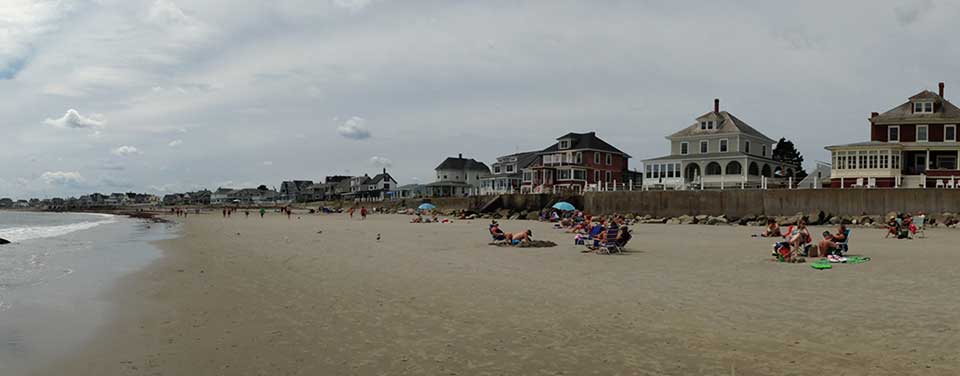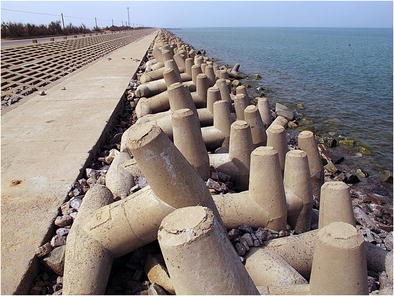Not known Facts About Shore Protect Team
Table of ContentsWhat Does Shore Protect Team Mean?The Only Guide to Shore Protect TeamHow Shore Protect Team can Save You Time, Stress, and Money.An Unbiased View of Shore Protect TeamThings about Shore Protect TeamShore Protect Team - The FactsThe smart Trick of Shore Protect Team That Nobody is Talking About
Reduction in building value: As the location tourist is influenced by erosion, so then is the economy. Purchasers are much less most likely to look for a coastline home that could be damaged anytime by the impending flooding and erosion emergency situation. Consequently, building worth can go down greatly and affect the whole region.Whether a beach is simply tiny and congested or needs to shut totally for the safety of the community and neighboring residential properties, this substantially influences tourism. Subsequently, local economic climates are influenced (https://www.horticulturaljobs.com/employers/3838454-shore-protect-team). Risk of injury: The boosted risk of flooding and architectural failures triggers a raised threat of injury to nearby vacationers and community members

is home to more than 84,240 miles of shoreline with 41% of it subjected to the open ocean. Coastal designers supervise of safeguarding the coast against modifications by reducing the harmful effects of both all-natural and synthetic events. Shoreline stabilization is straight relevant to their task. Waterfront resorts: Since shoreline disintegration effects tourist, it impacts the success of beachfront hotels.
Shore Protect Team Can Be Fun For Anyone
This eventually leads to closures and deserted beachfront properties. Coastal industrial organizations: No vacationers suggests no organization. For those organizations providing to locals, their property goes to danger of damage from erosion and flooding. Coastal state parks: State parks that exist along coastlines are at threat of damage. Not only to the manufactured structures and properties on website, however also to the all-natural ecological communities that exist within.
Soft stablizing is a far better solution for the environment and even more sustainable overall. Tough stabilization makes use of manufactured structures as protection to manage disintegration. Normally, these structures are mounted at best angles or alongside quit sand movement and reduce the force of waves. The majority of kinds of difficult stablizing like seawalls and sheet steel are not excellent for shoreline stablizing.
The 8-Minute Rule for Shore Protect Team
There's likewise not enough evidence of their effectiveness relying on the kind of shoreline and regional problems. Tough stabilization strategies tend to be harder to mount and don't match the natural aesthetic, sticking out like a sore thumb and damaging neighborhood ecosystems in lots of situations. Coastline nutrition is the procedure of adding lost sand and debris back to coastlines after erosion has actually occurred.
TrapBags help in the process of coastline nutrition by protecting natural ecosystems and allowing plants to expand. While this procedure can be expensive and is not irreversible, the pros have a tendency to outweigh the disadvantages. TrapBag barriers offer several residential or commercial properties that make them ideal for coastal and riverbank disintegration security. They're: Environmentally pleasant: You can utilize indigenous soil both to surround and to fill the TrapBags.

The Best Guide To Shore Protect Team
Easy to set up: Ease of installment implies TrapBags can be released promptly in the event of an emergency situation. They can additionally be mounted without any heavy equipment. Economical: TrapBags are ideal for both little and large locations of shoreline. They provide an inexpensive solution to cover projects of any type of size.
The ideal seawall design depends on location-specific elements, consisting of bordering erosion procedures. There are three major kinds of seawalls: vertical, rounded, tipped, and piles (see table below). A report published by the United Nations Setting Program (UNEP) recommends that the tsunami of 26 December 2004 created less damage in the locations where natural obstacles existed, such as mangroves, coral reefs or seaside plant life.
Natural obstacles, such as reef and mangrove forests, prevent the spread of tidal waves and the flow of seaside waters and minimized the flood and surge of water. A cost-benefit approach is a reliable method to establish whether a seawall is proper and whether the benefits deserve the expense.
Shore Protect Team - Truths
A seawall is a static feature which can contravene the vibrant nature of the shore and hamper the exchange of sediment between land and sea. The table listed below summarizes some favorable and unfavorable impacts of seawalls which can be utilized when comparing their performance with other seaside monitoring choices, such as beach nourishment. [] Advantages and negative aspects of seawalls according to Short (1999) Advantages Negative aspects Long-term solution in comparison to soft coastline nutrition.

This can cause beaches to dissipate, making them useless for coastline goers. Usually, seawalls can be an effective way to control coastal erosion, however just if they are built well and out of materials that can endure the force of continuous wave energy.
The Shore Protect Team Statements
Combined with a high construction price, this has caused raising use other soft engineering coastal monitoring options such as beach replenishment. Seawalls are constructed from different products, many frequently enhanced concrete, rocks, steel, or gabions. Various other feasible building materials include plastic, wood, light weight aluminum, fiberglass composite, and eco-friendly sandbags made of hemp and coir. The suitable seawall layout depends on location-specific aspects, consisting of surrounding erosion procedures. There are 3 primary kinds of seawalls: upright, rounded, tipped, and piles (see table listed below).
All-natural barriers, such as reef and mangrove woodlands, prevent the spread of tsunamis and the flow of seaside waters and reduced the flood and surge of water. A cost-benefit approach is an effective method to establish whether a seawall is proper and whether the advantages are worth the expenditure.
Shore Protect Team Fundamentals Explained
A seawall is a fixed attribute which can clash with the dynamic nature of the shore and hamper the exchange of debris in between land and sea. The table listed below summarizes some favorable and negative results of seawalls which can be utilized when contrasting their performance with various other coastal administration choices, such as beach nourishment. [] Benefits and downsides of seawalls according to Short (1999) Advantages Negative aspects Long-term service in contrast to soft beach sustenance. dock and bulkhead construction.

This can cause beaches to dissipate, rendering them ineffective for coastline goers. Typically, seawalls can be an effective means to control coastal disintegration, however only if they are constructed well and out of materials that can hold up against the pressure of continuous wave power. Some understanding is needed of the seaside processes and morphodynamics details to the seawall area.